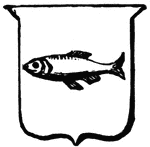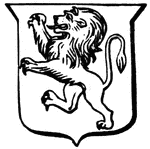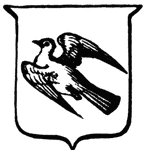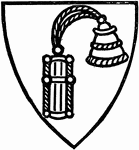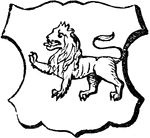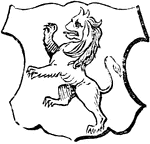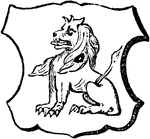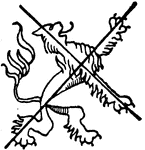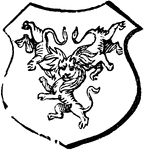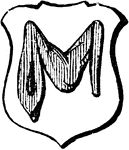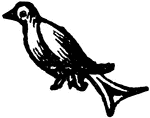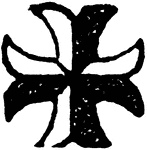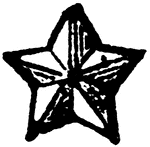This ClipArt gallery offers 243 illustrations of charges that would typically be seen in heraldry. A charge is any image, normally an animal, person, or plant, that is on the shield of a coat of arms.
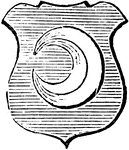
Increscent
"Azure, a moon increscent argent. INCRESCENT. The new moon, with her horns turned towards the dexter…
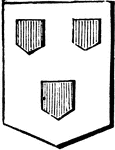
Inescutcheons
"Argent, three inescutcheons gules. INESCUTCHEON. The name given to small escutcheons forming a bearing…

Label Difference
"The Heir, or first son, the LABEL. The differences used by armorists at the present time are nine in…
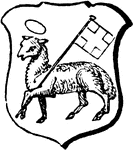
Paschal Lamb
"Argent, a lamb passant, carrying a banner charged with a cross. PASCHAL LAMB, or HOLY LAMB." -Hall,…
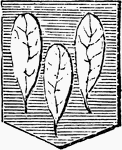
Leaves Slipped
"Azure, three laurel leaves slipped, argent. SLIPPED. Torn from the stock or branch." -Hall, 1862
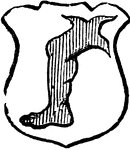
Leg Erased
"Argent, a leg erased at the midst of the thigh gules. ERASED. Signifies any thing torn or plucked off…

Legs Conjoined
"Argent, three legs armed, conjoined at the fess point at the upper extremity of the thigh, flexed in…

Lion
"The lion holds an important place among the animals born in coat-armor. As early as the 12th century,…
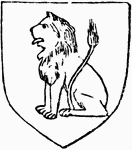
Lion
"The lion holds an important place among the animals born in coat-armor. As early as the 12th century,…

Lion Couchant
"Lion couchant. COUCHANT. The French word for lying down with the breast towards the earth, and the…
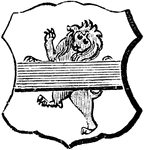
Lion Debruised
"Argent, a lion rampant guardant gules, debruised by a fess azure. DEBRUISED. Any animal that has an…
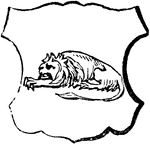
Lion Dormant
"Lion dormant. DORMANT. The French word for sleeping, used to denote the posture of a lion, or any other…
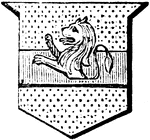
Lion Naissant
"Or, from the midst of a fess, gules, a lion rampant naissant. NAISSANT. A French word signifying coming…

Lion Rampant Double-Headed
"Lion rampant double-headed. RAMPANT. Any beast in a fighting attitude." -Hall, 1862
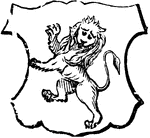
Lion Rampant Gardant
"Lion rampant gardant. RAMPANT. Any beast in a fighting attitude." GARDANT. Facing foward. -Hall, 1862
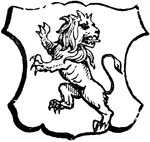
Lion Rampant Regardant
"Lion rampant regardant. RAMPANT. Any beast in a fighting attitude. REGARDANT. An animal looking towards…
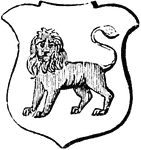
Lion Statant Gardant
"Lion statant gardant. STATANT. An animal standing still with all its legs on the ground." GARDANT.…
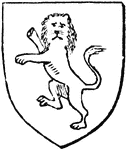
Gardant Lion
"The lion holds an important place among the animals born in coat-armor. As early as the 12th century,…
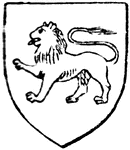
Passant Lion
"The lion holds an important place among the animals born in coat-armor. As early as the 12th century,…
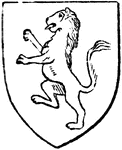
Rampant Lion
"The lion holds an important place among the animals born in coat-armor. As early as the 12th century,…
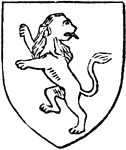
Rampant Regardant Lion
"The lion holds an important place among the animals born in coat-armor. As early as the 12th century,…
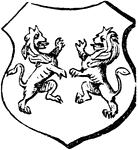
Lioncels Combatant
"Lioncels combatant. LIONCELS. Two or more lions. COMBATANT. A French word for fighting." -Hall, 1862
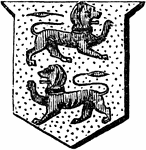
Lions Counter Passant
"Or, two lions passant counter passant gules, the uppermost facing the sinister side of the escutcheon,…
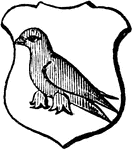
Martlet
"Argent, a martlet, gules. MARTLET. An imaginary bird said to be without legs; it is used both as a…
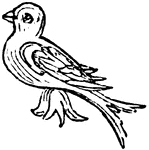
Martlet Difference
"Fourth Son, the MARTLET. The differences used by armorists at the present time are nine in number.…
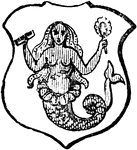
Mermaid Crined
"Argent, a mermaid gules, crined or. CRINED. This is said of an animal whose hair is of a different…
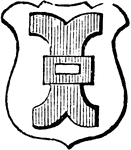
Millrind
"Argent, a millrind, gules. MILLRIND. The iron placed in the centre of a grindstone to protect the hole…
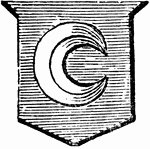
Moon Decrescent
"Azure, a moon decrescent, proper. DECRESSANT, or DECRESCENT. A moon in its wane, whose horns are turned…
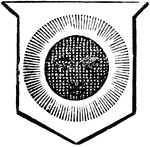
Moon Detriment
"Argent, the moon in her detriment sable. DETRIMENT. The moon is said to be in its detriment when it…
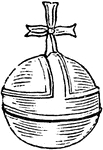
Mound
"MOUND. A globe encircled with a band and surmounted with a cross; it is an ensign of royalty, signifying…
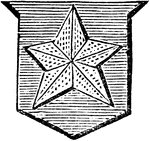
Mullet
"Azure, a mullet or. MULLET. From the French word molette, the rowel of a spur: it is generally drawn…
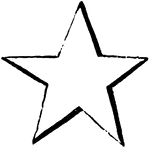
Mullet Difference
"Third Son, the MULLET. The differences used by armorists at the present time are nine in number. They…
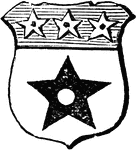
Mulllet Pierced
"Argent, a mullet pierced, sable, on a chief azure, three mullets pierced, of the first. PIERCED OR…
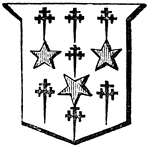
Mullets and Cross Crosslets
"Argent, three mullets gules, accompanied with seven cross crosslets fitchy sable—three in chief,…

Mullets Counter-Changed
"Per pale, or and azure, on a chevron, three mullets all counter-changed. COUNTER-CHANGED. The intermixture…

Naiant
"Argent, a salmon proper, naiant, its head towards the sinister side of the shield. NAIANT. A French…

Pelican Vulning
"Argent, a pelican's head, erased, vulning. VULNING. Any creature in the act of wounding itself." -Hall,…
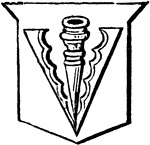
Pheon
"Argent, a pheon proper. PHEON. A missile instrument with a barbed head, thrown from a cross bow." -Hall,…
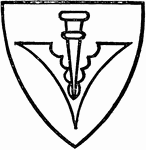
Pheon
"The barbed head of a spear or arrow, engrailed on the inner side. The point of the spear is placed…
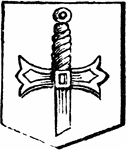
Pommelled
"POMMELLED. The pommel of the sword is the round ball or knob at the end of the hilt of a sword." -Hall,…
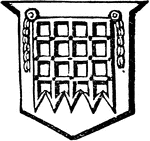
Portcullis
"PORTCULLIS. A grating suspended by chains, used to defend the entrance to a castle." -Hall, 1862
